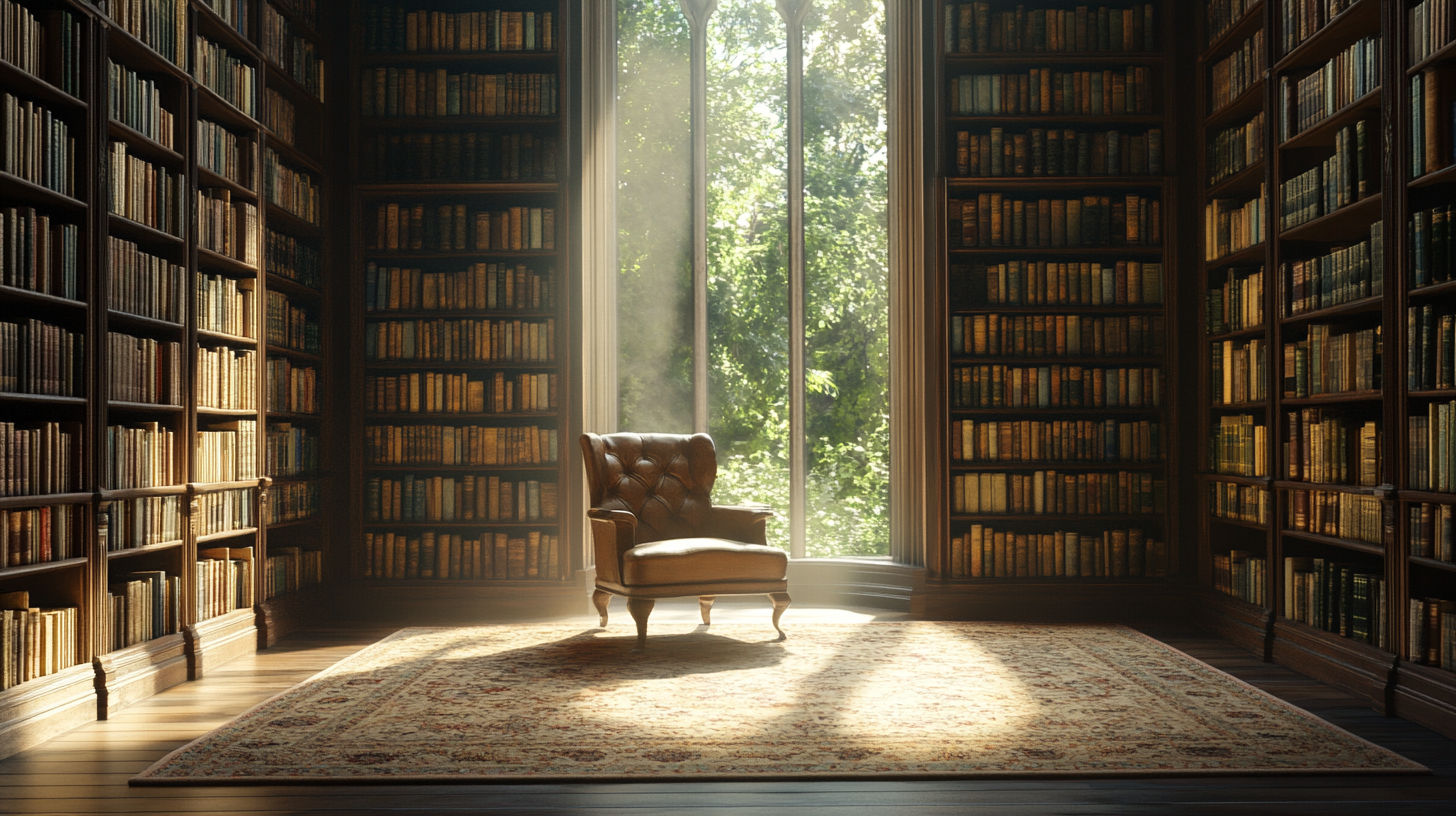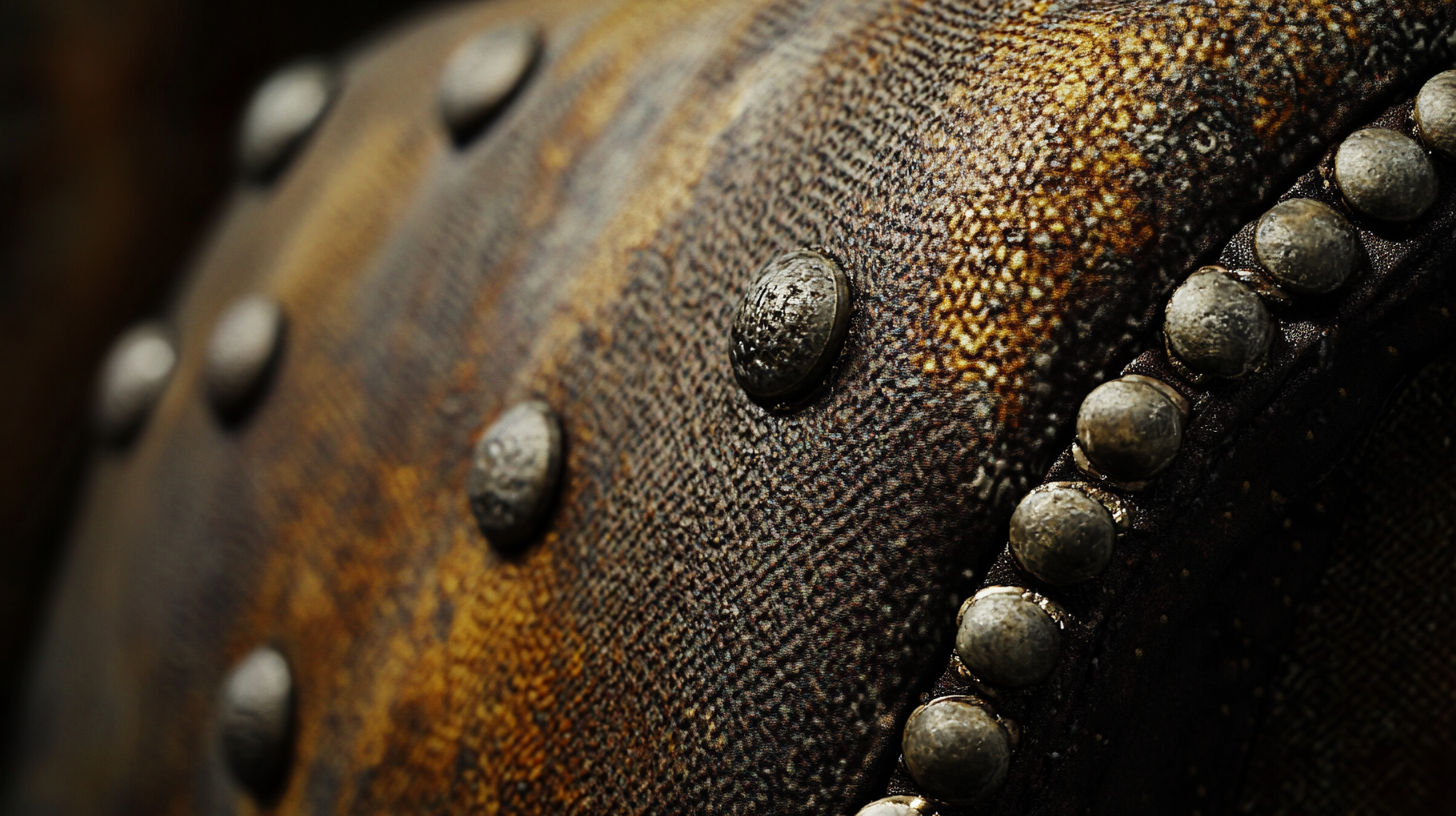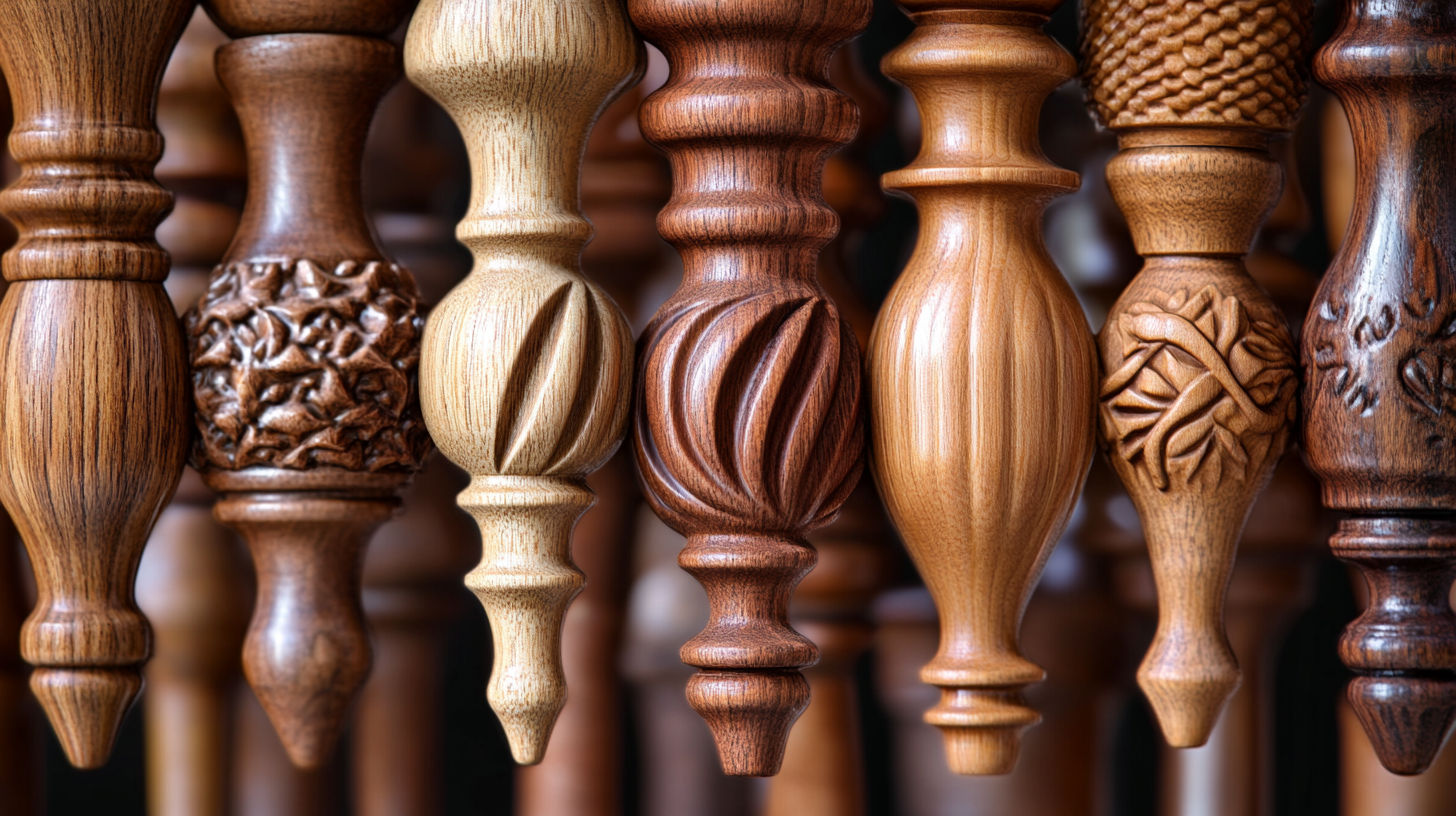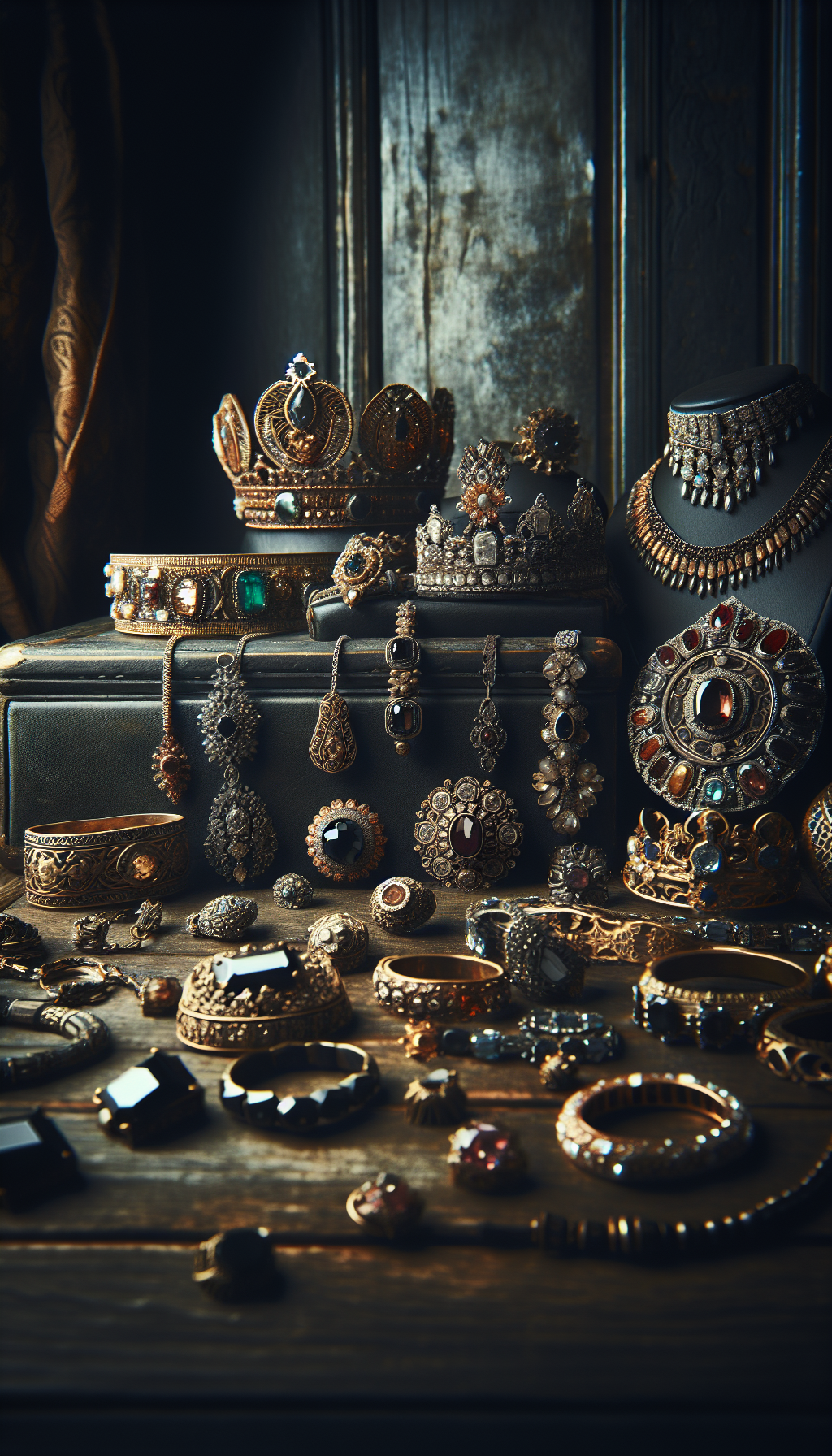Understanding how to identify and value antique chairs is both an art and a science. Whether you’re a collector, dealer, or simply curious about that family heirloom in your attic, knowing the distinguishing characteristics of different chair styles can help you determine their age, authenticity, and value. In this comprehensive guide, we’ll walk you through the key aspects of antique chair identification, from recognizing specific design periods to evaluating construction techniques and condition.
Table of Contents
- Understanding Major Antique Chair Styles
- How to Date Antique Chairs
- Examining Construction Techniques
- Materials Used in Antique Chairs
- Identifying Maker’s Marks and Signatures
- Assessing Condition and Authenticity
- Factors Affecting Antique Chair Value
- Popular High-Value Antique Chair Types
- Where to Buy and Sell Antique Chairs
- Resources for Further Research
Understanding Major Antique Chair Styles
Evolution of Antique Chair Styles
- 1700-1755
Queen Anne
Characterized by graceful curves, cabriole legs, and shell motifs. Features include fiddle-shaped backs, pad or trifid feet, and minimal ornamentation. These chairs emphasize comfort and elegant simplicity. - 1755-1790
Chippendale
Named after Thomas Chippendale, these chairs feature more elaborate carving, ribbon-back designs, ball-and-claw feet, and often incorporate Chinese and Gothic influences. More substantial than Queen Anne pieces. - 1780-1820
Federal/Hepplewhite
Lighter, more delicate designs featuring shield, oval, or rectangular backs. Often decorated with carved wheat, urns, or feathers. Typically feature straight, tapered legs. - 1790-1815
Sheraton
Similar to Hepplewhite but with rectangular backs and more slender proportions. Often feature lyre, urn, or splat designs and tapered legs, sometimes with decorative inlays. - 1820-1850
Empire
Heavier, more substantial designs influenced by ancient Greek and Roman motifs. Features include scrolled arms, curved backs, and legs with animal paw feet. - 1840-1900
Victorian
Elaborate, ornate designs with extensive carving, balloon backs, and tufted upholstery. Various revival styles (Gothic, Rococo, Renaissance) were popular during this period. - 1880-1915
Arts & Crafts/Mission
Reaction against Victorian excesses, featuring simple, straight lines, minimal decoration, and exposed joinery. Often made of oak with a focus on craftsmanship. - 1920-1939
Art Deco
Geometric patterns, bold colors, and innovative materials. Less common in chairs than other furniture types but featured streamlined forms.
When examining a chair’s style, pay particular attention to:
- Back Shape: Is it straight, curved, shield-shaped, or balloon-backed?
- Leg Design: Look for cabriole (S-curved), straight, tapered, or turned legs
- Arm Style: Note whether arms are curved, straight, scrolled, or absent
- Decorative Elements: Observe carvings, inlays, or painted details
- Overall Proportions: Consider the scale and weight of the design
As you become more familiar with different styles, you’ll notice subtle variations that can help pinpoint the exact period and potentially even the maker of an antique chair.
How to Date Antique Chairs
Dating by Construction Method
The way a chair was constructed offers valuable clues about when it was made:
Joint Types:
- Hand-cut dovetails (pre-1890s) vs. machine-cut dovetails (after 1890s)
- Mortise and tenon joints (common in quality pieces throughout history)
- Dowel joints (more common after 1830)
Tool Marks:
- Irregular saw marks indicate hand sawing (pre-1850s)
- Circular saw marks appear after the 1830s
- Band saw marks appear after the 1870s
Screws and Nails:
- Hand-forged nails (pre-1800)
- Square machine-cut nails (1790s-1890s)
- Round wire nails (post-1890s)
- Handmade screws with irregular slots (pre-1850)
- Machine-made screws with uniform slots (post-1850)
Wood Aging Signs:
- Natural patina development
- Uneven coloration from exposure
- Wear patterns consistent with age
According to experts at Hemswell Antique Centres, “Start by looking for individual markings. If you’re lucky, sometimes the exact year is inscribed too, but markings often fade over time.”
Key Dating Indicators
What truly constitutes an antique? As noted by specialists at Nimbus Antiques: “In the world of Antique furniture and other collectable items, an ‘Antique’ is generally considered to be an item that is at least one hundred years old. Anything less than that, but still old, is generally classified as ‘Vintage’.”
Examining Construction Techniques
Chair Frame Construction
The overall construction of the chair frame evolved significantly over time:
Pre-Industrial (before 1830):
- Entirely hand-crafted
- Asymmetrical elements due to hand work
- Wood selection based on structural needs (different woods for different parts)
Early Industrial (1830-1880):
- Combination of hand and machine techniques
- More uniform components, but still with some variation
- Evidence of transitional tools (early machine saws alongside hand tools)
Late Industrial (1880-1920):
- Primarily machine-made components
- High level of uniformity in parts
- Mass production techniques evident
Joinery Techniques
The joints used to connect chair components are extremely telling:
Dovetail Joints:
- Hand-cut dovetails feature irregular spacing and sizing
- Machine-cut dovetails show perfect uniformity
- Half-blind dovetails often used in drawer construction
Mortise and Tenon Joints:
- Primary method for joining chair rails to legs
- Can be visible (through tenon) or hidden
- Often secured with wooden pegs
Corner Blocks:
- Added for strength at structural junctions
- Became more common after 1850
- Changed from hand-cut to machine-cut over time
Upholstery Construction
Upholstery techniques and materials also evolved significantly:
Pre-1850s:
- Horsehair, cotton, or wool stuffing
- Hand-tied springs (after 1830)
- Natural fiber webbing
- Limited padding, simpler designs
Victorian Era (1840-1900):
- More elaborate upholstery techniques
- Deeper tufting and button detailing
- Multiple layers of materials
- Coil springs widely used
Early 20th Century:
- Introduction of machine-made components
- New materials (early synthetic fabrics)
- More standardized techniques
According to furniture restoration experts at Museum Quality Restoration Services, “The first thing to look for right away is the overall design of the chair. What time period is it from?” This initial assessment should be followed by a detailed examination of construction techniques to confirm the period identification.
Construction Authenticity Checklist
Check these items to assess the authenticity of construction techniques
- Evidence of hand-cut joinery (for pre-1880 pieces)
- Appropriate patination and wear patterns
- Tool marks consistent with the purported period
- Secondary woods typical of the period and region
- Nails or screws appropriate to the era
- Original finish or appropriate refinishing
- Period-appropriate upholstery technique (if original)
Materials Used in Antique Chairs
Common Woods in Antique Chairs
Different periods and regions favored specific woods:
American Chairs:
- Eastern white pine (common for secondary woods)
- Maple (especially in New England)
- Cherry (popular in Federal period)
- Walnut (18th through 19th centuries)
- Oak (popular in Arts & Crafts era)
British Chairs:
- Mahogany (especially Georgian and Victorian)
- Walnut (Queen Anne and early Georgian)
- Oak (17th century and revival periods)
- Rosewood (Regency and Victorian)
- Satinwood (late 18th century)
European Continental Chairs:
- Fruitwoods (French provincial)
- Walnut (widely used across Europe)
- Beech (often used for bent parts)
- Ebonized woods (various periods)
Upholstery Materials
Upholstery materials also changed over time:
Early Materials (pre-1850):
- Horsehair
- Cotton batting
- Natural fiber (hemp, jute) webbing
- Wool stuffing
- Leather (on some styles)
Victorian Era (1840-1900):
- Coil springs
- More complex layering of materials
- Elaborate fabrics (brocades, velvets)
- Buttoning and deep tufting
Early 20th Century:
- Introduction of machine-made components
- Early synthetic materials
- More standardized techniques
Decorative Elements
Additional materials were often used for decoration:
- Inlays: Contrasting woods, ivory, mother-of-pearl, or metals inserted into the surface
- Veneers: Thin layers of expensive woods applied over cheaper bases
- Gilt: Gold leaf or gold paint highlighting decorative elements
- Brass: Hardware, mounts, or decorative elements
- Caning and Rush: Natural materials used for chair seats

Typical Woods by Period
Common woods used in different antique chair periods
</tbody>
</table>
According to Paolo Moschino’s antique guide, “The likelihood of finding intricate hand-made joints is higher. Dovetail joints were quite popular in the late 17th and early 18th centuries, therefore this piece is likely to be very old. Symmetry is yet another indicator in the building.”
Identifying Maker's Marks and Signatures
Where to Look for Marks
Maker’s marks are typically found in less visible areas:
- Under the seat - particularly on the frame rails
- Back of the backrest - especially on the lower portions
- Inside of chair legs - where they join the seat
- Underneath drawers - if the chair has small drawers
- On dust covers - underneath upholstered seats
Types of Marks to Look For
Different types of identifying marks include:
- Paper Labels: Common in 19th and 20th century pieces from larger manufacturers
- Branded Marks: Burned into the wood with a hot iron stamp
- Carved or Stamped Marks: Incised directly into the wood
- Metal Plates: Applied to furniture (more common after 1850)
- Hand-Written Inscriptions: Sometimes including date and maker
- Shop Marks: Numbering systems or codes used by specific workshops
Notable Furniture Makers and Their Marks
Some renowned chair makers whose pieces command premium values:
- Thomas Chippendale: Rarely signed his work; attribution is typically by style, quality, and provenance
- Duncan Phyfe: Rarely signed; known for exceptional craftsmanship in the Federal style
- Samuel McIntire: American craftsman known for Federal style with distinctive carving
- Gustav Stickley: Used branded mark “Als ik kan” (If I can) on Arts & Crafts pieces
- Thonet: Pioneers of bentwood chairs, often with paper labels or metal tags
- R.J. Horner: Late 19th century manufacturer known for ornate Victorian pieces
- Herter Brothers: High-quality pieces often made for wealthy clients
Using Reference Resources
When you find a mark, consult specialized resources:
- Online databases of furniture marks
- Reference books focused on specific makers or periods
- Museum archives and collections
- Professional appraisers with specialized knowledge
According to Westland London, “Start by looking for individual markings. If you’re lucky, sometimes the exact year is inscribed too, but markings often fade over time.”

Assessing Condition and Authenticity
Condition Assessment
When evaluating an antique chair’s condition, consider:
Structural Integrity:
- Are all joints tight and secure?
- Is the frame stable without wobbling?
- Are there any repairs, breaks, or replacements?
Wood Condition:
- Check for cracks, splits, or warping
- Look for insect damage (tiny holes from wood-boring insects)
- Assess water damage or sun fading
Finish Condition:
- Is the finish original or has it been refinished?
- Is there appropriate patina for the age?
- Are there excessive scratches, water rings, or damage?
Upholstery Assessment:
- Is it original or has it been redone?
- What is the condition of the fabric and padding?
- Are the springs, webbing, and interior structure sound?
Spotting Reproductions and Fakes
Watch for these telltale signs of reproductions:
Construction Inconsistencies:
- Modern fasteners in supposedly antique pieces
- Machine-made components in purportedly handcrafted items
- Wood types inconsistent with the period
Artificial Aging:
- Uniform “distressing” that doesn’t match natural wear patterns
- Chemical darkening rather than natural patination
- Deliberately applied dirt or grime in crevices
Proportion and Design Issues:
- Details that don’t quite match the period
- Combinations of elements from different periods
- Dimensions that differ from period standards
Quality Discrepancies:
- Fine visible details on showcase areas but crude work in less visible spots
- Inconsistent quality of carving or decoration
- Modern glues, finishes, or materials
Authenticity Factors
Factors that support authenticity include:
Provenance Documentation:
- Original sales receipts
- Family history documentation
- Previous auction or dealer records
Consistent Wear Patterns:
- Natural wear on areas where hands and bodies contact the chair
- Fading consistent with normal use and age
- Floor wear on leg bottoms matching the age
Period-Correct Materials and Techniques:
- Appropriate woods and secondary materials
- Construction methods matching the purported period
- Age-appropriate hardware and fasteners
Condition Impact on Value
According to Fontaine’s Auction, appraisers typically consider these aspects in antique furniture valuation:
- Rarity: The rarer a piece is, the more value it has
- Aesthetics: Do the design and craftsmanship create an overall cohesive and stunning appearance?
- Desirability: How sought-after is this style or maker in the current market?
- Authenticity: Is the piece genuinely what it purports to be?
- Condition: What is the overall state of preservation?
Factors Affecting Antique Chair Value
Key Value Determinants
Rarity and Scarcity:
- Limited production pieces command higher prices
- Unusual designs or features increase desirability
- Regional pieces with limited distribution are often more valuable
Designer or Maker:
- Chairs by renowned designers or workshops command premiums
- Signed or documented pieces have higher values
- Regional cabinetmakers with strong reputations
Historical Significance:
- Association with historical events or figures
- Representation of important design innovations
- Documented provenance from significant collections
Aesthetics and Design Quality:
- Exceptional carving or design elements
- Superior proportions and balance
- Artistic merit beyond functional considerations
Current Market Trends:
- Fluctuating popularity of different styles
- Shifts in interior design preferences
- Changes in collector interests
Value Ranges by Style
Different chair styles and periods command varying price ranges:
Antique Chair Value Ranges
Typical market values by style (2023-2024)
| Category | Price | Notes |
|---|---|---|
| Queen Anne (1700-1755) | Walnut, Maple, Cherry | Walnut most prized, often with figured grain |
| Chippendale (1755-1790) | Mahogany, Walnut | Mahogany preferred for its carving properties |
| Federal/Hepplewhite (1780-1820) | Mahogany, Satinwood, Maple | Often with contrasting inlays |
| Victorian (1840-1900) | Rosewood, Walnut, Mahogany | Darker woods favored for ornate styles |
| Arts & Crafts (1880-1915) | Oak, Ash, Cherry | Quarter-sawn oak especially valued |
</tbody>
</table>
Impact of Condition on Value
The condition significantly impacts value, with these approximate effects:
Mint/Museum Quality: 100% of optimal value
- Original finish, minimal wear, no repairs, all original parts
Excellent: 80-90% of optimal value
- Original finish with light wear, no significant damage or repairs
Very Good: 60-75% of optimal value
- May have minor repairs, some wear appropriate to age, mostly original
Good: 40-60% of optimal value
- Some repairs or restoration, moderate wear, may have replacement parts
Fair: 20-40% of optimal value
- Multiple repairs, significant wear, replaced components, structural issues
Poor: Under 20% of optimal value
- Major damage, extensive repairs, missing elements, major alterations
Impact of Restoration
Restoration affects value in complex ways:
Professional, Period-Appropriate Restoration:
- May preserve or slightly enhance value for usable furniture
- Should be disclosed and appropriate to the piece’s age and style
Over-Restoration:
- Excessive refinishing or “improving” beyond original condition
- Can significantly reduce value for collectors of original surfaces
Amateur Repairs:
- Typically detract from value
- May cause additional damage requiring professional correction
According to Vinterior’s guide, understanding construction techniques is vital in valuation: “Learn how to identify antique chairs, construction techniques, and styles of antique chairs with Vinterior.”
Popular High-Value Antique Chair Types
Windsor Chairs
American and English Windsor chairs remain highly collectible:
American Windsor Chairs (18th-19th century):
- Bow-back, comb-back, and fan-back varieties most sought after
- Original paint substantially increases value (never refinish!)
- Regional variations have dedicated collector bases
- Value Range: $1,000-$15,000+ depending on rarity, condition, and provenance
English Windsor Chairs:
- Wheel-back, stick-back, and comb-back designs most collectible
- Elm seats with yew or fruitwood components command premiums
- Value Range: £800-£8,000+ for fine examples
Chippendale Chairs
Authentic period Chippendale chairs remain investment-grade antiques:
American Chippendale (1755-1790):
- Ball-and-claw feet examples most desirable
- Philadelphia examples particularly prized
- Carved splats and original surface key to highest values
- Value Range: $2,000-$30,000+ for exceptional examples
English Chippendale:
- More formal designs with intricate carving
- Chinese-influenced examples (“Chinese Chippendale”) particularly valuable
- Value Range: £1,500-£20,000+ for fine sets
Arts & Crafts / Mission Chairs
Arts & Crafts movement chairs have seen steady appreciation:
Gustav Stickley:
- Early models with original finish most valuable
- Red decals or branded marks authenticate pieces
- Value Range: $1,500-$15,000+ for single chairs
Greene & Greene:
- Rare and exceptionally valuable
- Distinguished by cloud-lift motifs and exposed joinery
- Value Range: $5,000-$50,000+ for authenticated examples
Charles Rennie Mackintosh:
- Distinctive high-backed designs are iconic
- Original examples extremely rare
- Value Range: £10,000-£100,000+ for original pieces
Art Nouveau Chairs
Art Nouveau chairs by renowned designers command extraordinary prices:
Louis Majorelle:
- French Art Nouveau master known for flowing lines
- Often incorporates naturalistic carved elements
- Value Range: $5,000-$25,000+ per chair
Émile Gallé:
- Exceptional carved details and organic forms
- Often includes marquetry and nature motifs
- Value Range: $4,000-$30,000+ for authenticated pieces
Regional American Chairs
Certain regional American chairs have dedicated collectors:
Pennsylvania German Chairs (18th-19th century):
- Original paint decoration highly prized
- Distinctive regional characteristics
- Value Range: $1,000-$15,000+ for fine examples
Shaker Chairs (19th century):
- Minimalist design with exceptional craftsmanship
- Ladder-backs and rocking chairs particularly desirable
- Value Range: $2,000-$20,000+ for authenticated pieces
According to posts on Reddit’s r/Antiques, even seemingly ordinary chairs can have significant value: “Trying to ascertain age / make of these chairs. Trying to sell them don’t want to under-price them. Think they’re late Victorian.”
Where to Buy and Sell Antique Chairs
Buying Antique Chairs
Popular sources for purchasing antique chairs include:
Specialized Antique Dealers:
- Often have curated selections and expertise
- May offer authenticity guarantees and return policies
- Generally higher prices but greater confidence in purchases
Antique Shows and Fairs:
- Allow in-person examination of pieces
- Opportunity to negotiate directly with dealers
- Wide variety of options in one location
Auction Houses:
- Range from international houses (Christie’s, Sotheby’s) to regional firms
- Provides market validation of values
- Opportunity for both bargains and premium pieces
Online Marketplaces:
- Platforms like 1stDibs, Chairish, and Ruby Lane specialize in vetted antiques
- eBay and Etsy offer wider ranges but require more buyer knowledge
- Social media marketplace groups dedicated to antiques
Estate Sales and Private Sellers:
- Often lower prices but require more knowledge to identify valuable pieces
- Less likely to have detailed provenance information
- Potential for discovering undervalued items
Selling Antique Chairs
Options for selling antique chairs include:
Consignment with Dealers:
- Dealer handles showing and selling the piece
- Typically takes 30-50% commission
- Benefits from dealer’s expertise and client base
Auction Consignment:
- Market-driven pricing
- Professional cataloging and marketing
- Commissions typically range from 10-25% plus fees
Direct Sale Platforms:
- Online marketplaces like 1stDibs, Chairish (seller fees apply)
- Social media groups dedicated to antiques
- Local classified listings
Antique Shows (For Dealers):
- Booth rental fee plus possible sales percentage
- Requires transportation and staffing
- Access to knowledgeable buyer pool
Pricing Strategies for Sellers
When selling antique chairs, consider these pricing approaches:
Research Comparable Sales:
- Check recent auction results for similar items
- Review dealer asking prices for comparable pieces
- Consider condition differences when comparing
Professional Appraisal:
- Provides documented value opinion
- Particularly important for high-value pieces
- Costs typically $100-$400 depending on detail level
Set Realistic Expectations:
- Dealer prices include profit margin and overhead
- Private sales typically achieve 60-80% of retail prices
- Auction results can vary widely based on buyer interest
Consider Audience and Venue:
- Specialized dealers may pay more for certain styles
- Local markets may value regional pieces differently
- International buyers may pay premiums for certain periods
According to Reddit discussions, properly identifying vintage vs. true antique status affects value: “So from what I’m gathering these chairs are ‘vintage’, not antique. Any value to them? What would the style be called?”
Resources for Further Research
External Resources for Antique Chair Research
Paolo Moschino's Antique Chair Guide
Comprehensive guide covering identification, dating, and valuation of antique chairs with detailed information on styles and construction techniques.
Antiques World Chair Styles Reference
Extensive A-Z catalog of antique chair styles with identification information, names, and detailed pictures for 18th and 19th-century chairs.
Museum Quality Restoration Services Guide
Expert insights on antique chair identification with focus on preservation and restoration considerations.
Hemswell Antiques Dating Guide
Antique dealer's perspective on dating antique chairs, with emphasis on British antiques and practical identification techniques.
Vinterior Chair Styles Guide
Detailed guide on antique chair styles and construction techniques with historical context and buying recommendations.
Westland London Identification Guide
Practical how-to guide for identifying antique chairs with emphasis on markings and distinctive period features.
Fontaine's Antique Furniture Appraisal Guide
Auction house perspective on antique furniture valuation factors and appraisal methodologies.
Reddit Antiques Community
Active community where collectors and experts discuss antique identification, including frequent posts about chair identification and valuation.
Books on Antique Chair Identification
Essential reference books for serious collectors:
- Field Guide to American Antique Furniture by Joseph T. Butler
- American Furniture at the Metropolitan Museum of Art by Morrison H. Heckscher
- The Encyclopedia of Furniture by Joseph Aronson
- English Furniture: From Gothic to Sheraton by Herbert Cescinsky
- American Windsor Chairs by Nancy Goyne Evans
- The Bulfinch Illustrated Encyclopedia of Antiques edited by Reed Eveleth
Museum Collections to Study
Museums with exceptional chair collections for study:
- Metropolitan Museum of Art (New York)
- Victoria and Albert Museum (London)
- Winterthur Museum (Delaware)
- Museum of Fine Arts Boston
- Philadelphia Museum of Art
- Colonial Williamsburg
Continuing Education
Opportunities to expand your knowledge include:
- Antique dealer workshops and seminars
- Museum-sponsored lectures
- Online courses in furniture history and identification
- Auction preview events
- Antique collector club meetings
As noted by Dengarden, “When identifying antique chairs, it’s important to have a basic knowledge of the significant design periods and the important types of chairs.” Continuing education is key to developing this knowledge base.
Common Questions About Antique Chair Identification
How can I tell if my chair is truly antique?
For a chair to be considered genuinely antique, it should generally be at least 100 years old. To determine if your chair meets this threshold:
- Examine the construction techniques (hand-cut dovetails, irregular saw marks, etc.)
- Look for signs of age-appropriate wear and patina
- Check for period-consistent hardware (hand-forged or square nails in older pieces)
- Evaluate the wood types and how they’ve aged
- Assess the overall style against known period designs
Remember that "vintage" typically refers to items 50-100 years old, while "antique" designates pieces over 100 years old. If you’re uncertain, consulting with a professional appraiser or antique dealer can provide clarity.
How do I identify the style of my antique chair?
Identifying an antique chair's style involves examining several key features:
- Back Design: The shape and decoration of the back (shield-back, balloon-back, ladder-back, etc.)
- Leg Style: Straight, cabriole (curved), or turned legs with specific foot designs
- Arm Shape: Curved, straight, scrolled, or absent entirely
- Decorative Elements: Carvings, inlays, or painted details
- Overall Proportions: The scale and balance of the design
Compare these elements to reference materials showing chairs from different periods. Online resources, books, and museum websites can help you match your chair to established style categories like Queen Anne, Chippendale, Federal, Victorian, or Arts & Crafts.
How do I determine the value of my antique chair?
Determining an antique chair's value involves considering multiple factors:
- Authenticity and Age: Genuine period pieces command higher prices than reproductions
- Maker or Designer: Chairs by known makers are more valuable than unmarked pieces
- Condition: Original finish, minimal repairs, and structural integrity significantly impact value
- Rarity: Unusual designs or rare surviving examples from a period are more valuable
- Provenance: Documented history of ownership adds value, especially with notable previous owners
- Current Market Demand: Popularity of different styles fluctuates over time
For an accurate valuation, consult multiple sources: similar auction results, dealer prices, online marketplaces, and professional appraisers. A written appraisal from a qualified expert is recommended for insurance or high-value pieces.
Is it better to restore an antique chair or leave it in original condition?
This decision depends on the chair's significance, condition, and your intended use:Arguments for preserving original condition:
- Original finishes and materials maintain historical integrity
- For museum-quality or collector pieces, original condition typically commands higher prices
- Patina and wear tell the story of the piece’s history
Arguments for restoration:
- Structural repairs ensure the chair remains usable and prevents further deterioration
- Sympathetic restoration using period-appropriate techniques can preserve value
- For pieces intended for regular use, restoration improves functionality
The best approach often lies between these extremes: stabilize structural issues, clean carefully, and preserve original finishes where possible. Always consult with a restoration professional who specializes in antiques before proceeding with significant work.
How can I tell if an antique chair has been repaired or altered?
Look for these telltale signs of repairs or alterations:
- Color and Finish Discrepancies: Differences in wood tone or finish sheen between parts
- Wood Grain Mismatches: Replacement parts often have different grain patterns
- Joint Irregularities: Added glue, fill material, or newer fasteners at joints
- Tool Marks: Different tool patterns on original vs. newer parts
- Hardware Inconsistencies: Replaced hardware often differs in style, material, or patination
- Structural Reinforcements: Added blocks or brackets suggest repairs
- Upholstery Evidence: Tack holes, staple marks, or fabric remnants from previous coverings
Using a black light can sometimes reveal newer finishes, repairs, or replacements as they often fluoresce differently than original materials. Minor repairs don’t necessarily diminish value if they’re well-executed and honest, but significant alterations or hidden repairs can substantially impact worth.
What are the most valuable types of antique chairs?
The most valuable antique chairs typically include:
- Documented Important Maker Pieces: Chairs by renowned makers like Thomas Chippendale, Duncan Phyfe, or Gustav Stickley
- Royal or Historical Association Pieces: Chairs with provenance linking them to royalty, historical figures, or significant events
- Early American Examples: Particularly from important colonial centers like Philadelphia, Boston, or Newport
- Rare Form Windsor Chairs: Especially with original paint and early dates
- Arts & Crafts Masterpieces: Particularly by Gustav Stickley, Greene & Greene, or Charles Rennie Mackintosh
- Art Nouveau Pieces: By designers like Louis Majorelle or Émile Gallé
- Early Signed Bentwood Chairs: Original Thonet examples from the mid-19th century
Exceptional examples from these categories can sell for tens of thousands to hundreds of thousands of dollars at major auctions. However, condition, provenance, and authenticity are critical factors in achieving top values.
How can I tell if a chair is hand-made or machine-made?
Key indicators that distinguish hand-made from machine-made chairs:Hand-made Characteristics (typically pre-1860s):
- Slight asymmetry in supposedly identical parts
- Irregular saw marks (straight hand saw marks or irregular pit saw marks)
- Hand-cut dovetails with slight irregularities in spacing and size
- Tool marks from hand planes, chisels, or gouges
- Slightly uneven surfaces on hidden areas
- Hand-forged or early machine-cut nails
Machine-made Characteristics (post-1860s):
- Perfect symmetry and uniformity in repeated elements
- Consistent circular saw marks (after 1830s) or band saw marks (after 1870s)
- Perfectly uniform dovetails or machined joints
- Smooth surfaces even in hidden areas
- Standardized, interchangeable parts
- Wire nails (after 1890s) and uniform screws
Most chairs made between 1830-1900 show a transition between these methods, with some machine-made components combined with hand finishing and assembly.
What should I look for when buying antique chairs?
When purchasing antique chairs, assess these key factors:
- Authenticity: Verify the piece is genuinely from the period claimed
- Structural Integrity: Ensure the frame is solid with tight joints
- Original Components: Check how much is original versus replaced
- Finish Condition: Evaluate whether the finish is original or refinished
- Repairs and Restoration: Identify any repairs and assess their quality
- Comfort and Usability: Consider whether the chair meets your functional needs
- Provenance: Request any available documentation of history and ownership
- Price Comparison: Research comparable examples to ensure fair pricing
- Return Policy: Understand the seller’s policies if issues are discovered later
Always examine chairs in person when possible, and don’t hesitate to request detailed photos of all sides, underneath, and any damaged areas when buying remotely. For significant purchases, consider having an independent expert evaluate the piece before finalizing the sale.
Conclusion
Identifying and valuing antique chairs requires careful examination of style, construction, materials, and condition. While it may seem overwhelming at first, developing this expertise becomes easier with practice and reference to reliable resources. Remember that authentication often involves a combination of factors rather than any single characteristic.
Whether you’re a seasoned collector, dealer, or simply curious about a family heirloom, the journey of discovery is part of the appeal of antique furniture. Each chair tells a story of its time, maker, and the people who have owned and used it throughout its history.
As you continue to explore the world of antique chairs, consider joining collector groups, attending auctions, visiting museums, and handling as many authentic pieces as possible. There’s no substitute for hands-on experience when developing your eye for quality and authenticity. With time and dedication, you’ll find yourself identifying periods, styles, and potential values with increasing confidence.
The resources provided in this guide offer excellent starting points for further research. Remember that antique identification is both an art and a science—combining factual knowledge with developed intuition that comes from experience.
Get a Professional Appraisal
Unsure about your item’s value? Our certified experts provide fast, written appraisals you can trust.
- Expert report with photos and comps
- Fast turnaround
- Fixed, upfront pricing
No obligation. Secure upload.
| Category | Price | Notes |
|---|---|---|
| Queen Anne (1700-1755) | $800 - $12,000+ | Higher for rare examples with original surface |
| Chippendale (1755-1790) | $1,500 - $20,000+ | Premium for original condition and fine carving |
| Federal/Hepplewhite (1780-1820) | $800 - $8,000+ | Higher for documented makers or inlaid examples |
| Victorian (1840-1900) | $300 - $5,000+ | Higher for unusual forms or documented makers |
| Arts & Crafts/Mission (1880-1915) | $800 - $10,000+ | Premium for Gustav Stickley, Roycroft, early examples |




